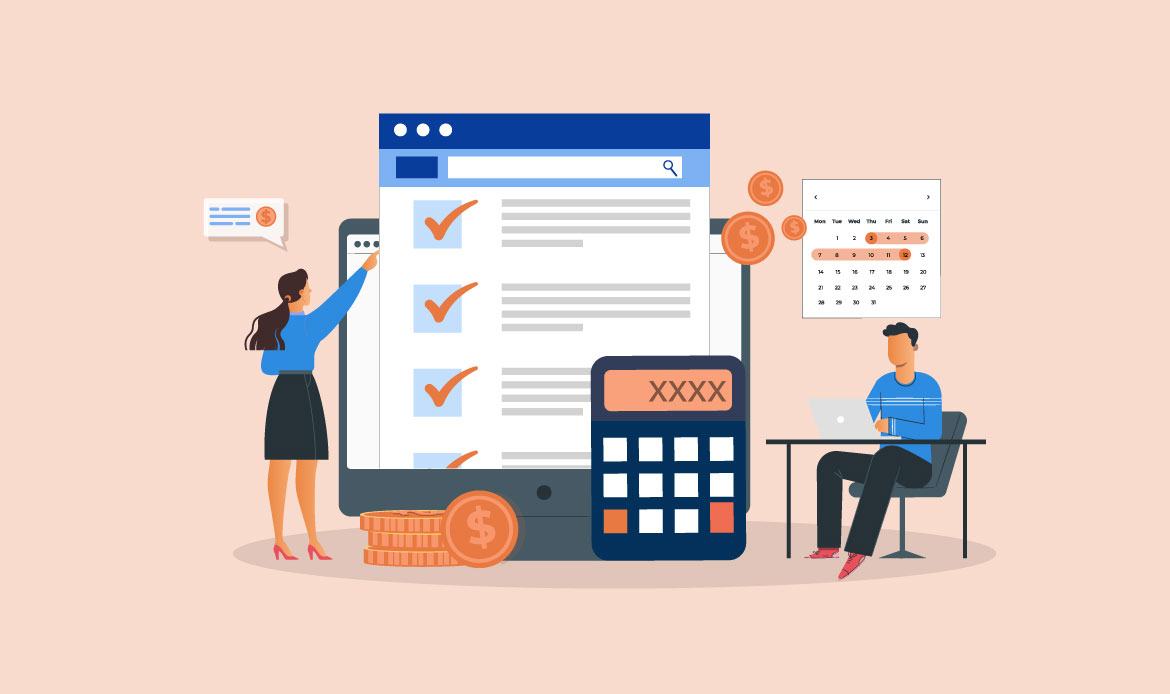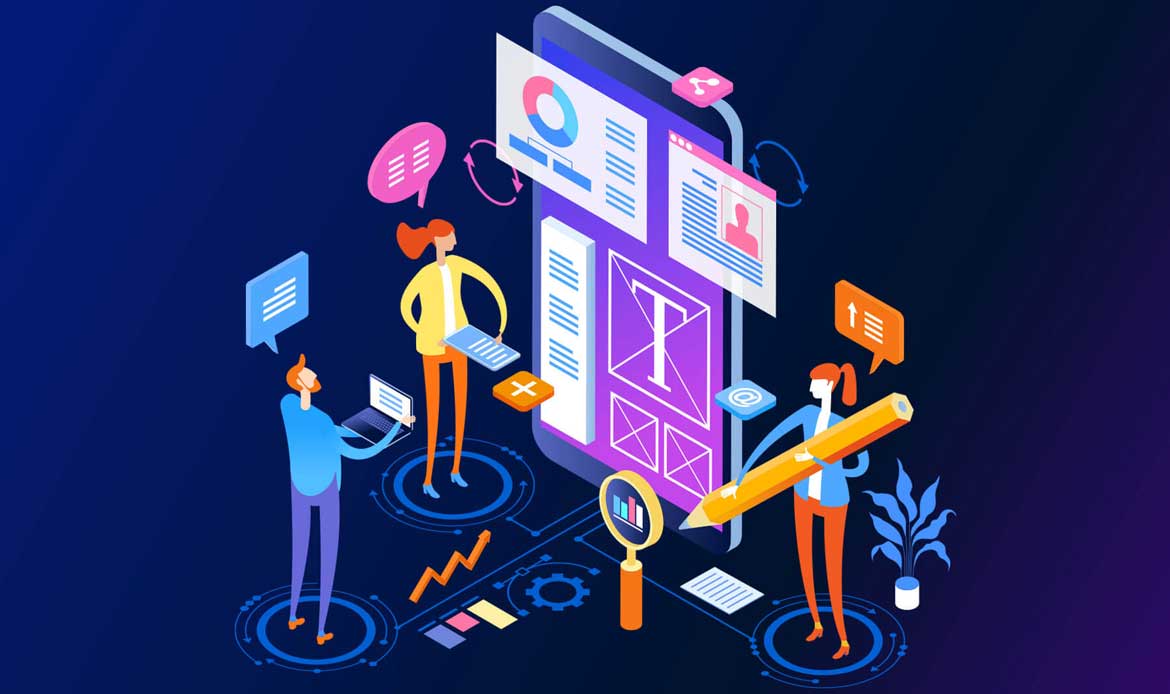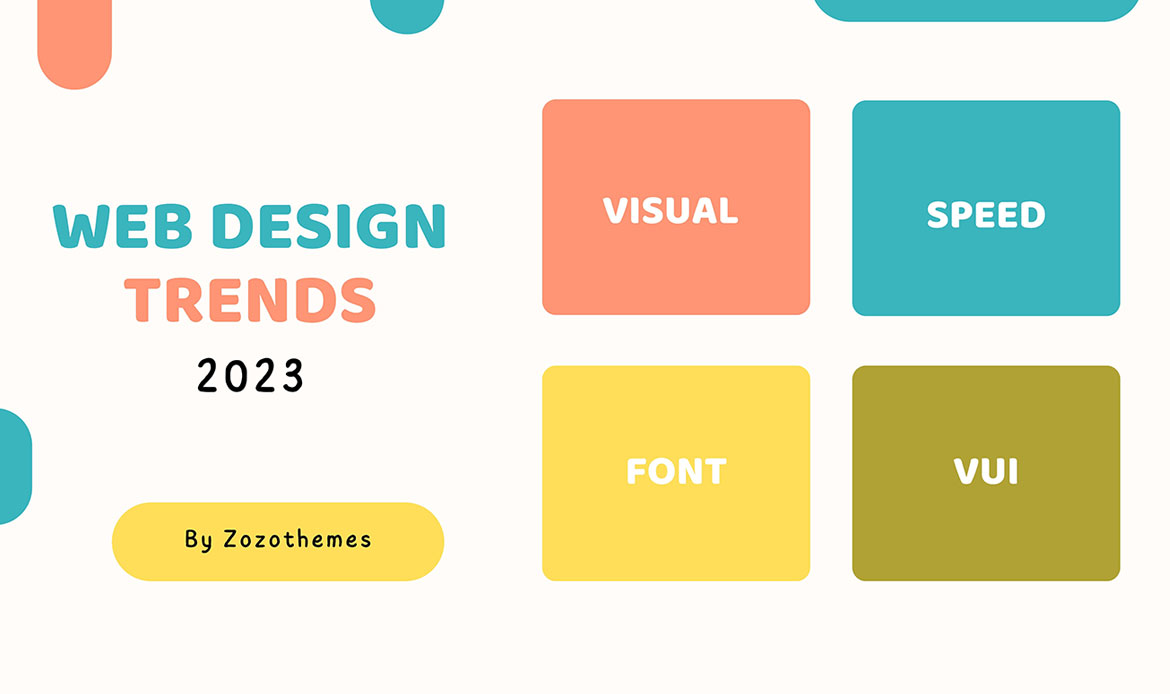Welcome to “Designing the Future: Exploring the Web Design Trends of 2024.” In the ever-evolving landscape of web design, staying ahead of the curve is essential for creating captivating and engaging online experiences.
As we enter the new year, it’s time to embark on a journey into the future of web design and uncover the trends that will shape the digital realm in 2024. Technology continues to advance at a rapid pace, paving the way for innovative design concepts and pushing the boundaries of what is possible. From mesmerizing visuals to seamless interactions, trends of web design in 2024 are set to revolutionize user experiences and redefine the online landscape.
In this article, we will delve into the cutting-edge trends that are poised to dominate the web design scene in 2024. We will explore the fusion of art and technology, the emergence of immersive experiences, and the transformation of user interfaces. Join us as we unravel the possibilities and discover how web design is evolving to meet the needs and expectations of the digital era.
Whether you are a web designer, developer, or simply an enthusiast, “Designing the Future: Exploring the Trends Web Design of 2024” will serve as your guide to embracing the next generation of design concepts. Get ready to be inspired, amazed, and empowered to create exceptional digital experiences that shape the future of the online world. The future of web design awaits, so let’s embark on this exciting journey together.
Immersive Visual Experiences:

In the ever-evolving world of web design, one trend that is set to dominate in 2024 is the creation of immersive visual experiences. As technology continues to advance, designers are finding innovative ways to engage users and create captivating digital environments that leave a lasting impression.
From bold color schemes to striking typography, designers will push the boundaries of creativity, making use of vibrant and attention-grabbing elements. Websites will leverage high-quality imagery, videos, and animations to create immersive experiences that draw users in and keep them engaged.
Moreover, immersive visual experiences provide a unique opportunity for storytelling. By combining visuals, interactivity, and narrative elements, web designers can guide users through compelling stories and create emotional connections. Whether it’s a brand’s origin story or an interactive journey through a virtual world, storytelling through immersive visual experiences helps to forge a deeper connection between the user and the website.
Micro-Interactions and Micro-Animations
Micro-interactions and micro-animations are subtle and purposeful design elements that occur in response to specific user actions or events. They provide feedback, guide users through the website, and enhance the overall user experience. These small design details can range from a button changing color on hover to a subtle animation when a form is submitted.
Micro-interactions and micro-animations can also be utilized to guide users through the website and improve navigation. By animating menus, dropdowns, and navigation elements, designers can create a more intuitive browsing experience. Subtle motion cues help users understand the hierarchy of information, provide visual cues for progress or completion, and draw attention to important elements on the page.
As trends of web design evolve, incorporating micro-interactions and micro-animations into the design process will be essential for creating websites that engage and captivate users. The careful implementation of these small design details can make a significant difference in the overall user experience, fostering a deeper connection between users and the website.
Voice User Interfaces (VUI)

A Voice User Interface (VUI) is a technology that enables users to interact with a website or application using voice commands and responses. It allows users to engage in a hands-free and natural way, making the browsing experience more accessible, convenient, and intuitive. By leveraging speech recognition and natural language processing, VUI transforms spoken words into actionable commands, providing a seamless and engaging user experience.
Voice assistants such as Alexa, Siri, and Google Assistant have already become integral parts of our daily lives, and now they are making their way into the web design landscape, opening up a new realm of possibilities for designers and users alike.
VUI offers numerous advantages, including improved accessibility and convenience. Users can perform tasks, search for information, and navigate websites simply by speaking their commands. This hands-free approach caters to individuals with disabilities and enhances the overall user experience. By incorporating VUI, designers create a more inclusive digital landscape.
Augmented Reality (AR) Integration
Augmented Reality (AR) integration is set to revolutionize web design in 2024, offering users immersive and interactive experiences directly on websites. By blending virtual elements with the real world, AR creates a dynamic and engaging environment that captivates users and transforms the way they interact with websites.
With AR integration, users can visualize products, try on virtual clothing, or even experience virtual environments without leaving the website. This technology adds an extra layer of interactivity and realism, allowing users to explore and engage with digital content in a whole new way.
Designers have the opportunity to incorporate AR elements seamlessly into web design, enhancing product displays, storytelling, and user engagement. Whether it’s overlaying 3D models onto real-world environments or implementing interactive AR markers, the possibilities are vast and exciting.
Minimalist and Clean Designs

In the fast-paced digital world of web design, clean and minimalist designs are making a significant impact in 2024. This trend focuses on stripping away unnecessary elements and embracing simplicity to create visually appealing and user-friendly websites.
Minimalist designs prioritize clean layouts, ample white space, and simple typography. By decluttering the interface and removing excessive ornamentation, designers can enhance the user’s focus and provide a seamless browsing experience. Minimalism promotes clarity, making it easier for users to navigate and interact with the website.
One of the key benefits of minimalist designs is improved loading times and performance. By reducing the number of elements and optimizing the code, websites can load faster, enhancing the user experience and reducing bounce rates.
Speed and Performance Optimization
In the ever-evolving world of web design, speed and performance optimization have become crucial factors in delivering exceptional user experiences in 2024. With the increasing emphasis on instant gratification and the need for seamless browsing, designers are prioritizing efficiency to create lightning-fast websites that load quickly and perform flawlessly.
Speed and performance optimization encompass various techniques and strategies aimed at reducing loading times and improving overall website performance. From optimizing code and compressing images to leveraging browser caching and content delivery networks (CDNs), designers are constantly seeking ways to enhance the speed and responsiveness of websites.
As trends of web design continue to evolve, optimizing speed and performance will remain a top priority. With the increasing reliance on mobile devices and the growing demand for instant access to information, users expect websites to load quickly and provide a smooth browsing experience across all devices.
Accessibility and Inclusivity

Accessibility in web design refers to designing and developing websites that can be easily accessed and used by individuals with disabilities. It involves incorporating features and functionalities that accommodate various impairments, such as visual, auditory, motor, or cognitive disabilities.
As trends of web design continue to evolve, accessibility and inclusivity will remain at the forefront. Designers must embrace these principles and make them an integral part of their design processes. By doing so, they can create websites that break down barriers, empower all users, and foster a more inclusive digital environment.
By incorporating accessible features and adopting inclusive design practices, designers can create websites that cater to the diverse needs of all users. Accessibility and inclusivity empower individuals with disabilities, enhance the user experience for everyone, and demonstrate a commitment to equal access and social responsibility.
Bold and Expressive Typography
Bold and expressive typography involves using eye-catching fonts, creative layouts, and strategic typography choices to create visually striking and memorable designs. This trend allows designers to communicate not only through words but also through the artistic and expressive qualities of typography itself.
By choosing unique and attention-grabbing fonts, designers can instantly captivate users and set a distinct tone for the website. Whether it’s a bold and impactful sans-serif font or an elegant and sophisticated script font, typography choices can convey emotions, establish brand identity, and enhance the overall aesthetics of the design.
In 2024, designers will continue to push the boundaries of typography, exploring new fonts, innovative layouts, and creative combinations. The evolving technology and web standards allow for greater flexibility and control over typography, giving designers the freedom to create unique and captivating designs.
Sustainability and Eco-friendly Design

Sustainability in web design encompasses various strategies aimed at reducing environmental impact. This includes optimizing code and files to minimize data transfer and reduce server load, compressing images to reduce file sizes, and adopting efficient hosting solutions that prioritize renewable energy sources. By implementing these measures, designers can contribute to a more sustainable web infrastructure.
Eco-friendly design also emphasizes creating websites that promote environmental awareness and inspire sustainable practices. Designers are incorporating nature-inspired color palettes, using eco-friendly graphics and illustrations, and featuring content that educates and encourages sustainable living.
By adopting sustainability and eco-friendly design practices, websites can contribute to a more sustainable future. In addition to minimizing environmental impact, embracing these practices can also have positive branding effects. Consumers are increasingly conscious of a company’s environmental stance, and eco-friendly design can help build a positive reputation and attract environmentally-minded users.
Dark Mode Dominance
Dark mode has gained immense popularity over the past few years, and its reign is expected to continue in 2024. With its sleek and modern aesthetic, dark mode not only reduces eye strain but also enhances the visual appeal of websites. Designers are leveraging the power of dark backgrounds, vibrant accents, and contrasting elements to create captivating and immersive experiences for users.
The popularity of dark mode stems from its ability to reduce eye strain, particularly in low-light environments. By reducing the amount of emitted light, dark mode provides a more comfortable viewing experience and improves readability. Additionally, dark mode has the added advantage of conserving battery life, especially on devices with OLED or AMOLED screens.
Moreover, dark mode provides a great opportunity to highlight content and focus attention on key elements. By strategically using lighter colors for text, buttons, and other interactive elements, designers can create a visually engaging hierarchy and guide users’ attention where it matters most.
Personalized User Experiences

In 2024, personalized user experiences have become a pivotal web design trend, transforming the way users interact with websites. Gone are the days of one-size-fits-all approaches. Today, users expect tailored experiences that cater to their unique preferences and needs.
Personalization in web design involves leveraging user data and insights to create customized interfaces, content recommendations, and dynamic layouts. By understanding user behavior, demographics, and browsing patterns, designers can deliver highly targeted experiences that resonate with users on a deeper level.
Personalization enhances user engagement, fosters a sense of connection, and ultimately leads to better user satisfaction. In a digital landscape where users seek personalized interactions, embracing this trend is essential for staying competitive and delivering exceptional user experiences.
Conclusion
As we conclude our exploration of the trends web design of 2024, one thing is abundantly clear: the future of web design is brimming with boundless possibilities. The dynamic nature of technology continues to push the boundaries of creativity, offering designers and developers the tools to shape captivating digital experiences like never before.
From the fusion of art and technology to the rise of immersive and interactive interfaces, the trends we’ve discussed in this article highlight the ongoing evolution of web design. As we look ahead, it becomes apparent that user-centricity and innovation will remain at the forefront of design practices.
In 2024, websites will become more than mere digital storefronts; they will transform into immersive environments that engage and delight users. Visual storytelling, micro-interactions, augmented reality, and voice-activated interfaces are just a few examples of the exciting developments on the horizon.
However, it’s important to remember that trends are not static. As technology continues to advance, new trends will emerge, and existing ones may evolve. The key to staying relevant and creating impactful designs lies in embracing a mindset of continuous learning and adaptation.
Whether you’re a seasoned designer or just starting your web design journey, the trends we’ve explored provide a valuable glimpse into the future landscape of the digital world. By harnessing these trends, experimenting with new techniques, and staying attuned to the needs and expectations of users, you can position yourself as a visionary in the ever-changing realm of web design.
As we bid farewell to this exploration of web design current trends in 2024, we encourage you to embrace innovation, think outside the box, and seize the opportunities that lie ahead. The future is yours to design, and with the right mix of creativity, technical prowess, and user-centricity, you have the power to shape digital experiences that captivate, inspire, and leave a lasting impact.


